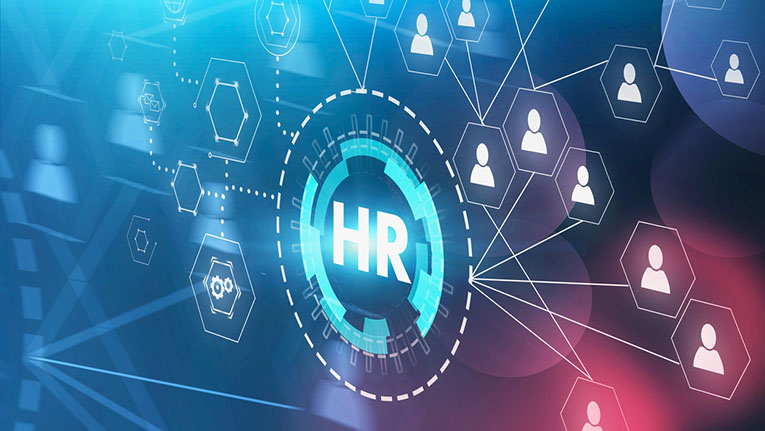
Learn how PossibleWorks can help you
Employee engagement has always been a hot topic of conversation amongst business leaders. It is well known that organizations that have an actively engaged workforce have a higher chance of success than their counterparts. However, many organizations have struggled to get employee engagement right. Keeping employees engaged is not a difficult task provided organizations see it as an on-going and holistic process of employee experience. Traditionally, year-end appraisals, bonuses, incentives, etc. were used as an effective method to keep employees engaged, however the times have changed.
The past few months of COVID-19 have resulted in companies’ laying-off employees, remote working and in general increased uncertainty for employees. This has brought organizational focus back to their employee motivation and engagement tactics as employee morale has touched an all-time low.
For organizations to succeed in post-COVID times, they need to focus on keeping their employees engaged and motivated. Companies therefore need to customize their approach for managing employees accordingly.
“Employee engagement is a catalyst for success and sustainability that cannot be ignored.” (Irene Becker)
In the current situation, this can’t be emphasized more.
Traditionally, companies conducted annual surveys, focus groups, and ad-hoc survey to gauge the level of engagement among its employees, identify problem areas and design interventions. Although useful, these methods are complex, usually low frequency or are conducted once a year, require third-party reliance and do not provide a full picture of the organizational environment as perceived by employees.
Today, both measurement of & acting on real-time engagement is crucial to understand what is working and what is not. Multiple tools are available to enable the same e.g. technology driven integrated performance management and employee recognition systems. Such platforms help organizations not just evaluate employee performance on an on-going basis but also enable continuous feedback to employees supplemented with components to recognize employee efforts. Features like 360 feedback drive transparency and increase the level of trust employees have in the organization. Through such tools, the HR or the management can make data driven, informed decisions to keep employees engaged with the organizations. Let’s look at the top 5 trends of employee engagement that all these changes have led to.
The present circumstances demand that companies elevate their work culture. The need to develop a harmonious and employee-oriented culture has become prominent. Considering employees as people first will help develop a feeling of care and respect among employees at all levels of the organization.
Apart from treating employees as humans, the future of employee engagement will see more flexibility to improve work-life balance for employees. Although the concept of work-life balance is not new, the want to increase work-life harmony has increased multiple times.
“Employee who believes that management is concerned about them as a whole- not just as an employee- are more productive, more satisfied and more fulfilled. Satisfied employees mean satisfied customers, which leads to profitability.” – Anne M. Mulcahy
COVID-19 has made companies realize that most job functions do not require employees to be physically present in the office. During the Corona-virus-prompted lockdowns, companies devised work-from-home measures to continue their operations. And it is time that flexible timings/shifts, remote working becoming a part of organizational cultures. Employees with a better work-life harmony will feel more satisfied with their work and are more engaged with the company.
A recent survey by FlexJob shows that 75% of workers feel more productive at home.
Tip: By treating employees as humans first you will show more empathy towards employees and increase their trust in the organization.

The rising use of technology has emerged in all function of Human Resource Management. With the increasing number of millennials in organizations; influx of latest technologies has become an integral strategy for employee engagement and retention as well.
Not only is technology crucial to keep Gen-Z engaged, the use of technology increases the overall efficiency of the organization. Some companies have already invested their resources in latest technologies like Cloud and AI platforms for better collaboration and performance management during remote working.
In the future use of technology will only rise and will become an effective factor to increase employee engagement. HRTech or Technology in HR is on the rise and will continue the upwards swing in the coming years. It will also be crucial in elevating the overall employee experience.
Tip: Technological advancement needs to be adopted regularly into the business processes to keep improving employee experience.

Performance management and appraisal have been used for determining employee’s contribution to organizational performance and have been key in determining employees’ salary increment, bonus, promotions, etc. Employees have seldom been satisfied with their annual performance appraisal evaluations. Most organizations are realizing that they need to do away with the annual rating system. However, this is just part of the solution.
Current scenario demands that organizations make their performance management a holistic process. Modern workplaces require agile goal management with quarterly/monthly review frequency. This coupled with a 360 degree feedback based approach that includes multi-dimensional feedback for an employee makes performance management ready for this new age.
A data-driven, real time and clear understanding of where employees’ performance stands will keep employees engaged and motivated to improve. Additionally, advanced performance management system will give accurate data and analytical insights to the management for informed decision making. All of this is critical for improving employee experience.
In the post-COVID times, work-from-home will become a norm for employees for various reasons. That will necessitate use of digital and advanced performance management tools to capture employee performance and conduct unbiased evaluation.
Tip: Use digital performance management system to access employee performance analytics from anywhere, anytime and improve employee experience.

COVID-19 has changed the expectations of employees from their organizations. While health insurance, yearly raise and paid leaves were considered satisfactory benefits by employees, the same has changed with time. Although monetary factors still play an important role in motivating employees, other non-monetary factors like recognition have become more essential.
The Gen-Y & Gen-Z workforce is not just looking for better pay, but they want to be recognized for their efforts as and when such outcomes are demonstrated. Recognizing the efforts of an employee go a long way to keep them motivated, engaged and driven to achieve higher goals. However, rewards and recognition needs to be holistic, personalized and agile.
“Research indicates that workers have three prime needs: Interesting work, recognition for doing a good job, and being let in on things that are going on in the company.” – Zig Ziglar
Organizations need to understand that every employee is different and so are his/her aspirations and what makes him/her feel appreciated. Designing a configurable rewards and recognition system that is integrated with your performance management software has become a top-priority for organizations as intelligence from both these interventions help organization identify potential talent and keep them engaged.
In the post-COVID era, rewards and recognition needs to become a core component of employee performance management.
Tip: Employ a rewards and recognition program tailor-made for your organizational culture for a more engaged workforce.

Employees are looking to be a part of organizations that offer a defined and visible path for career progression. Career progression does not just refer to timely promotions but also include the personal and profession development of employee as an individual.
A stagnant growth in an organization will prompt the Gen-Y & Gen-Z workforce to leave for better opportunities.
Organizations must foster an environment of continuous learning and development for employees. They must consciously identify new skills, skill gaps, and provide learning opportunities for their employees that are in line with organization’s ability to perform efficiently and better. Companies that invest in the growth of their employees in this manner are successful in engaging and thus retaining employees and decrease their attrition rates.
Tip: Introduce a formal process for identify new skills, skill gaps and organize formal/informal programs that help employees learn and grow.

The pandemic has changed the priorities for employees as well as organizations. Pre-COVID employee expectation included promotions, better pay and recognition as key factors to join an organization. However, flexible office timings, remote working, work-from-home, health insurance have gained more prominence now. Even for organizations, work from home was a once a month luxury offered to employees, however, it may become the regular way of working for most companies post-COVID.
With the changing times, the ways to keep employees engaged have also evolved. Organizations that can keep up with the latest trends will emerge successful in engaging and retaining its top talent.